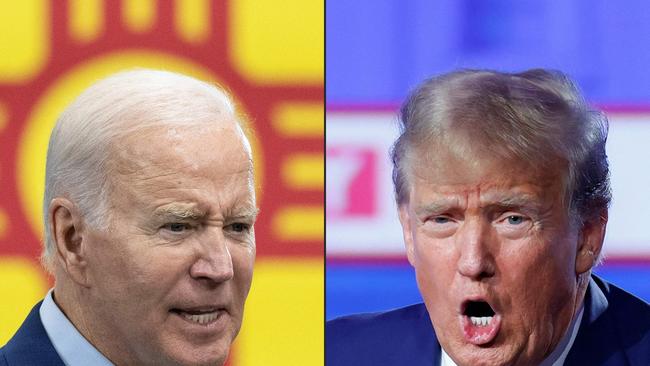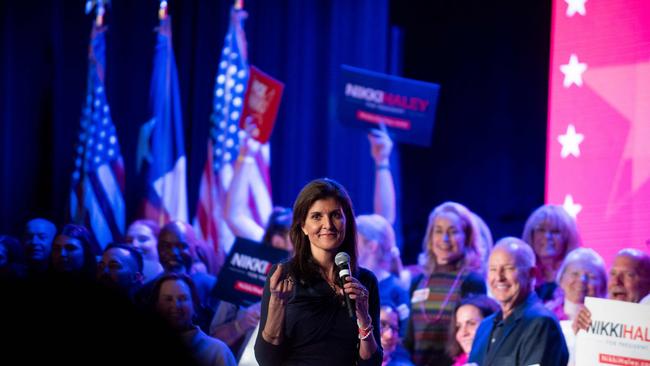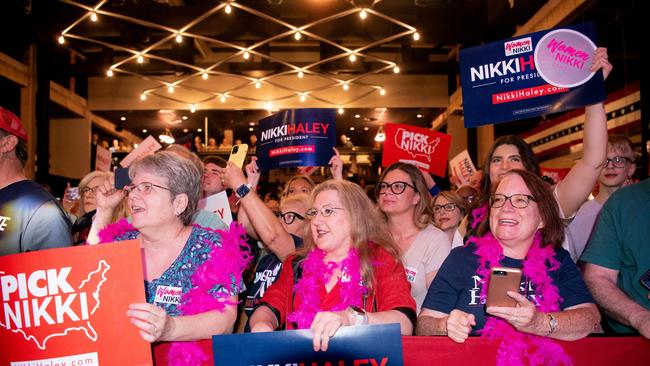What Nikki Haley’s supporters mean for Trump’s chances in November
Donald Trump’s hopes of being re-elected may lie with the groups that gave the most support to his key challenger, with suburban voters in battleground states behind the former South Carolina governor.

Lopsided wins in nearly every Republican primary so far gave former President Donald Trump an early lock on the 2024 GOP presidential nomination. But the places and voter groups that gave the most support to his key challenger, Nikki Haley, show Trump’s biggest vulnerabilities heading into the general election in November.
As recently as last week’s GOP primary in Pennsylvania, Haley pulled in about 17% of the vote -- including strong showings in the battleground state’s suburban counties. Those Haley voters, largely insignificant in the primary, could play an outsize role come November in swing-state contests that could decide the election by razor-thin margins.
To win, Trump will have to overcome the challenges the results in Pennsylvania -- and other primaries -- highlight: persuading voters in cities and their surrounding suburbs where the population is younger, has more college education and higher household incomes. These findings, based on a demographic analysis of primary results so far, mirror Associated Press VoteCast surveys conducted in early primary states that found stronger support for Haley among wealthier voters with college degrees.
The challenge hasn’t gone unnoticed. Last week, the Biden campaign announced a six-figure ad buy in Pennsylvania targeting the nearly 158,000 voters who chose Haley in the Republican primary.
In addition to Pennsylvania, Haley pulled in more votes than might be expected from a noncandidate in other April contests, notably 13% in swing state Wisconsin. That state has an open primary -- meaning any voter can participate regardless of party affiliation -- and some of those votes could have come from Democrats who plan to support President Biden in November but were eager to register their disfavor with Trump. Still, AP data shows that even in states with closed primaries, where only registered Republicans could vote in the GOP contest, Haley’s share was 16%.

Moreover, early polling showed that a majority of Haley voters said they wouldn’t ultimately vote for the former president. In South Carolina, for example, 61% of Haley voters in that state’s GOP primary said they ultimately wouldn’t vote for Trump, according to AP VoteCast. The South Carolina primary was open to any registered voter, meaning Democrats could participate so long as they hadn’t cast a ballot in their party’s primary.
Here are the places and people that supported Haley most.
Metro area voters Geographically, Haley did best in urban areas and surrounding suburbs. She took 24% of the vote in counties the American Communities Project calls “big cities”: densely populated, diverse places with higher incomes where Biden did well in 2020. She similarly did well in surrounding counties that the ACP calls “urban suburbs” and “exurbs,” where she took 26% and 23% of the vote, respectively. Those areas include heavily blue Northern Virginia -- where the primary was open -- but also Montgomery County, Pa., a Philadelphia suburb where the primary was only open to registered Republicans and Haley took 25% of the vote.
Across counties in states with closed primaries, Haley received a smaller percentage of votes in big cities and urban suburbs, 19% and 18%, respectively.
Suburban Haley voters included Jerry Kregel, 60, owner of a Christian publishing company who lives near Grand Rapids in Michigan, a key battleground state. Kregel said he won’t vote for Trump in November after backing Haley in his state’s primary in late February.
“I will not vote for Donald Trump, even though I am a Republican and agree with most of the policy positions that he represents,” he said. “He poorly represents the Republican Party and Americans. His character is so shoddy that I cannot support him.” Kregel said he isn’t yet ready to commit to Biden, but is close. “I am very much considering a vote for Joe Biden as a vote to try to keep Trump from getting back in office,” he said.

Tracy McCardell, 57, a Republican-leaning independent who works as a business consultant in suburban Rochester Hills, Mich., said she plans to vote for Trump after backing Haley in her state’s primary.
“I will probably vote for Trump because the other side is just a no go,” she said. “I will likely go with my least bad option.” Well-off college graduates Haley’s returns were stronger in places with higher levels of income and education, which tend to rise together -- and also tend to be higher in metro areas. She received 26% of the vote in counties with the highest educational attainment -- the top one-fifth of primary counties in terms of the percentage of people ages 25 and older with a bachelor’s degree or higher, according to 2018-22 census estimates. By comparison, she received 9% of votes across counties with the lowest educational attainment. In six swing states, Haley received 24% of votes in the highest-educated counties.
Likewise, she received 25% of the vote across the one-fifth of primary counties with the highest median household incomes, based on census estimates.
For example, Haley took 25% of the vote in Union County, N.C., a suburb of Charlotte, where the median household income in 2022 was $95,533 and 38% of people age 25 and older have a bachelor’s degree or higher. The GOP primary in North Carolina was partially closed -- only registered Republicans and unaffiliated voters could participate.
Younger voters In general, Haley received stronger support in primary counties with younger populations -- although the advantage isn’t as pronounced as with geography and education. She received 22% of the vote in the one-fifth of primary counties with the lowest median age, according to census data, compared with 19% in the oldest fifth of counties. Across states with closed primaries, Haley received 17% of votes in the youngest primary counties. In swing states, she received 24% of votes in those areas.
Several of these youngest counties are what the ACP terms “college towns, ” places such as Ingham County, Mich. -- home to Michigan State University -- where Haley received 35% of the vote in the state’s GOP primary. In Clarke County, Ga., home to the University of Georgia, Haley took 26% of votes in the primary. Both states held open GOP primaries.
When Haley exited the race on March 6, she declined to endorse Trump, and a person close to her says she is no closer to doing so than she was that day. “It is now up to Donald Trump to earn the votes of those in our party and beyond it, who did not support him, and I hope he does that,” Haley said at the time. “At its best, politics is about bringing people into your cause, not turning them away. And our conservative cause badly needs more people.”
WSJ







To join the conversation, please log in. Don't have an account? Register
Join the conversation, you are commenting as Logout